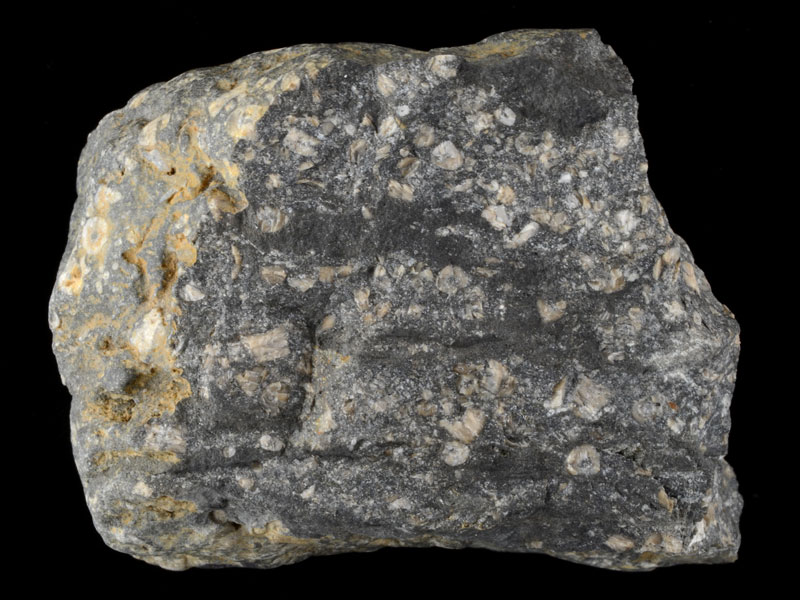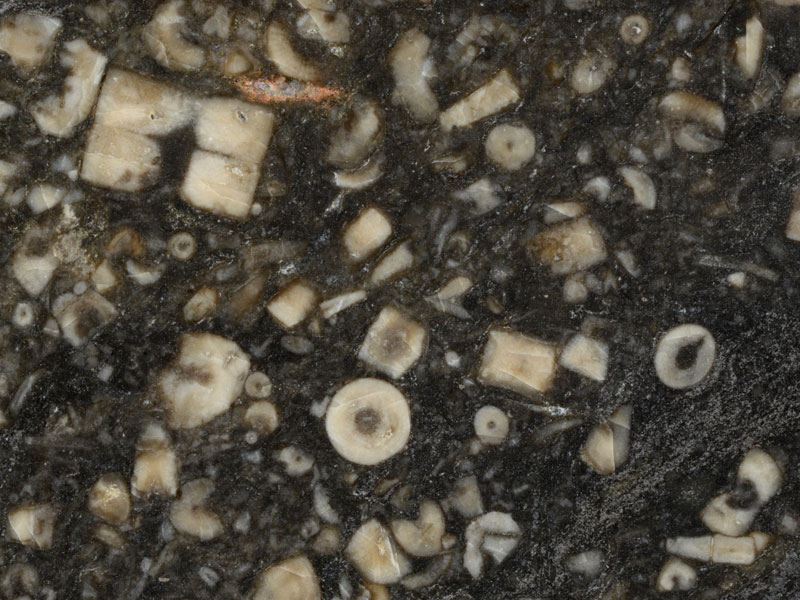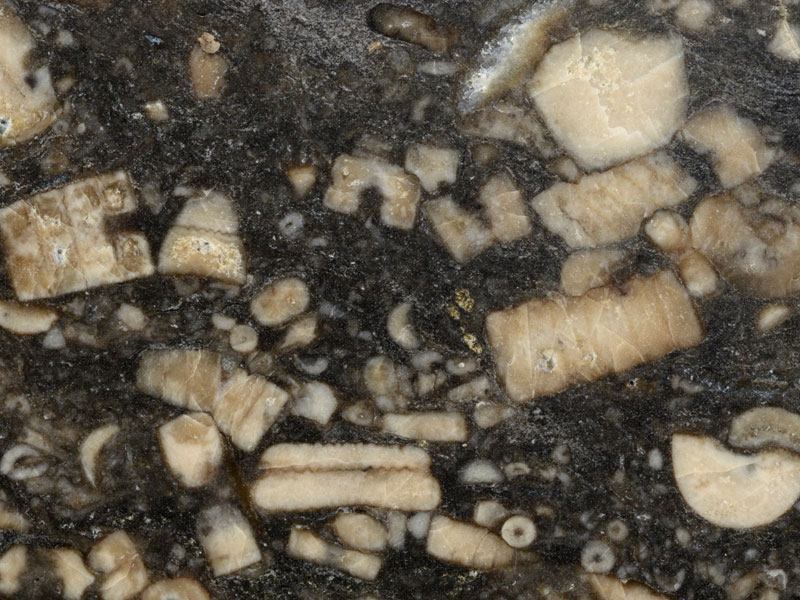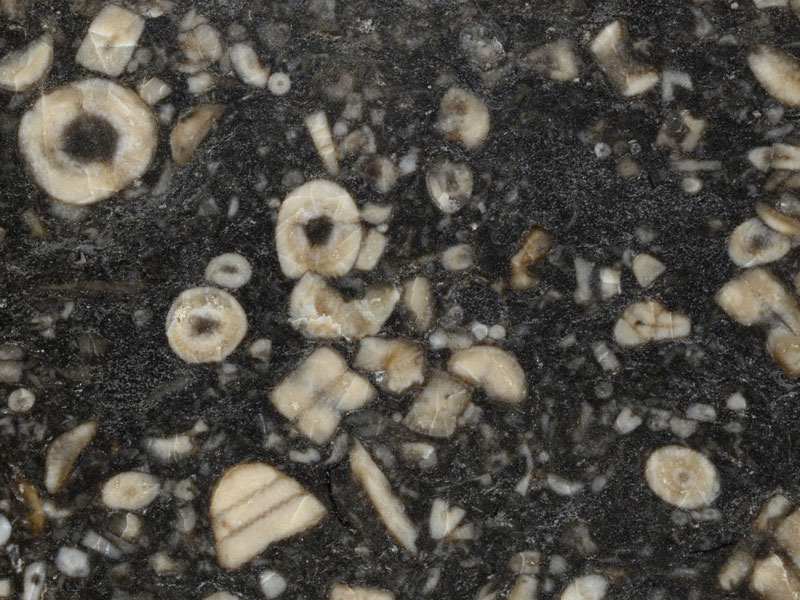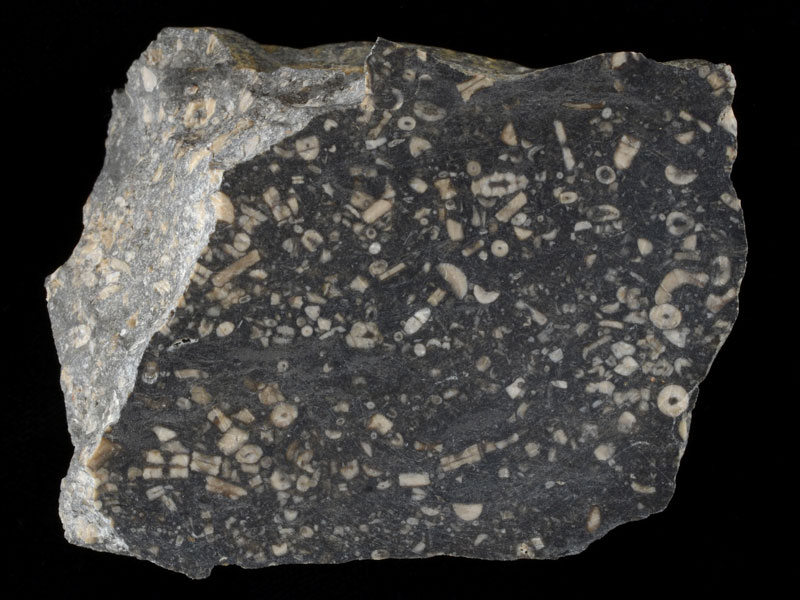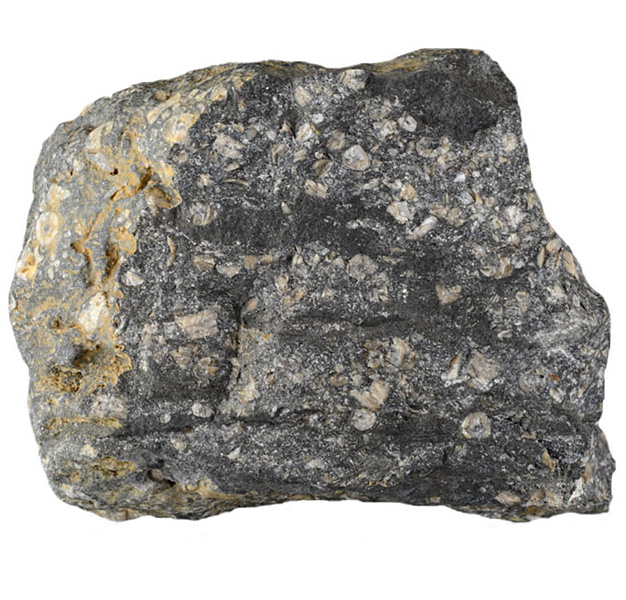
Fact sheet
This Lower Carboniferous limestone contains many fragments of crinoid ossicles that were once the stems of ancient marine animals attached to the sea bed, sometimes called sea lilies. There are also many fragments of brachiopod shells. The sample comes from Bucket Rocks, Berwick upon Tweed, England, and is cemented by a carbonate rich mud.
The thin section is dominated by two species of crinoid ossicles, both in longitudinal section and cross section. One species has a circular cross section, the other has a five-sided form. The crinoids have a dusty appearance due to the microcrystalline nature. Fragments of brachiopod shells are marked out by more transparent crystalline calcite. The cement ranges from blocky carbonate grains to fine-grained calcium-rich mud.
The United Kingdom Virtual Microscope (UKVM) collection consists of igneous, sedimentary and metamorphic rocks from around the UK.
It is intended as a teaching resource, helping to tell the story of the common rock types and how they form, and reflecting the history of the UK at the margins of the continent of Europe. The collection is a series of teaching sets, for example igneous rocks from the North Atlantic Igneous Province and SW England; high-temperature metamorphic rocks from Scotland and low-temperature metamorphic rocks from Wales; and sedimentary rocks, including English limestones and sandstones.
